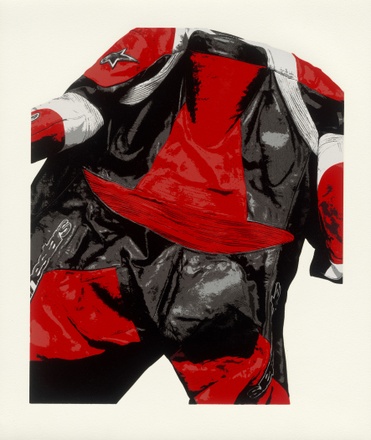Alexandra Bircken
Alpinestars (2024)
Driven by an interest in embodiment, feminist theory likes to emphasize skin as an interface that formally circumscribes bodies while remaining open to continuous reinscription. For Alexandra Bircken, who made a seamless career transition from fashion to fine art, engagement with skin as an interface between exterior and interior – including second skins, fashioned out of leather – is a thematic staple as well. Bircken’s engagement with clothing focuses, among other things, on its protective function, as do her artistic reflections on the largest organ of the human body. Bircken has frequently worked with motorcycle suits, for which tanned animal hide remains the most robust material, even in the face of high-tech developments in textiles. In motorsport, leather riding suits function as interfaces between the human body and the machine; the artist, for her part, disassembles them into fragments to then use sculpturally, in ways reminiscent of upholstery or taxidermy, or stretches them into wall pieces. The suit that Bircken has chosen as the motif for her first TEXTE ZUR KUNST edition is a model from the titular company Alpinestars. Marked by the kind of scratches and scuffs caused by abrasion from asphalt during falls or knee-down turns (in the screen print, they furrow the color like rapid, gestural strokes), the object portrayed here juxtaposes the need for safety with the desire for thrills and fast rides. While Bircken negotiates aspects of protection and vulnerability with “Alpinestars” and questions the demands placed on us by the paradigm of social acceleration, she simultaneously emphasizes its ambivalences and her own fascination with the “need for speed.”

